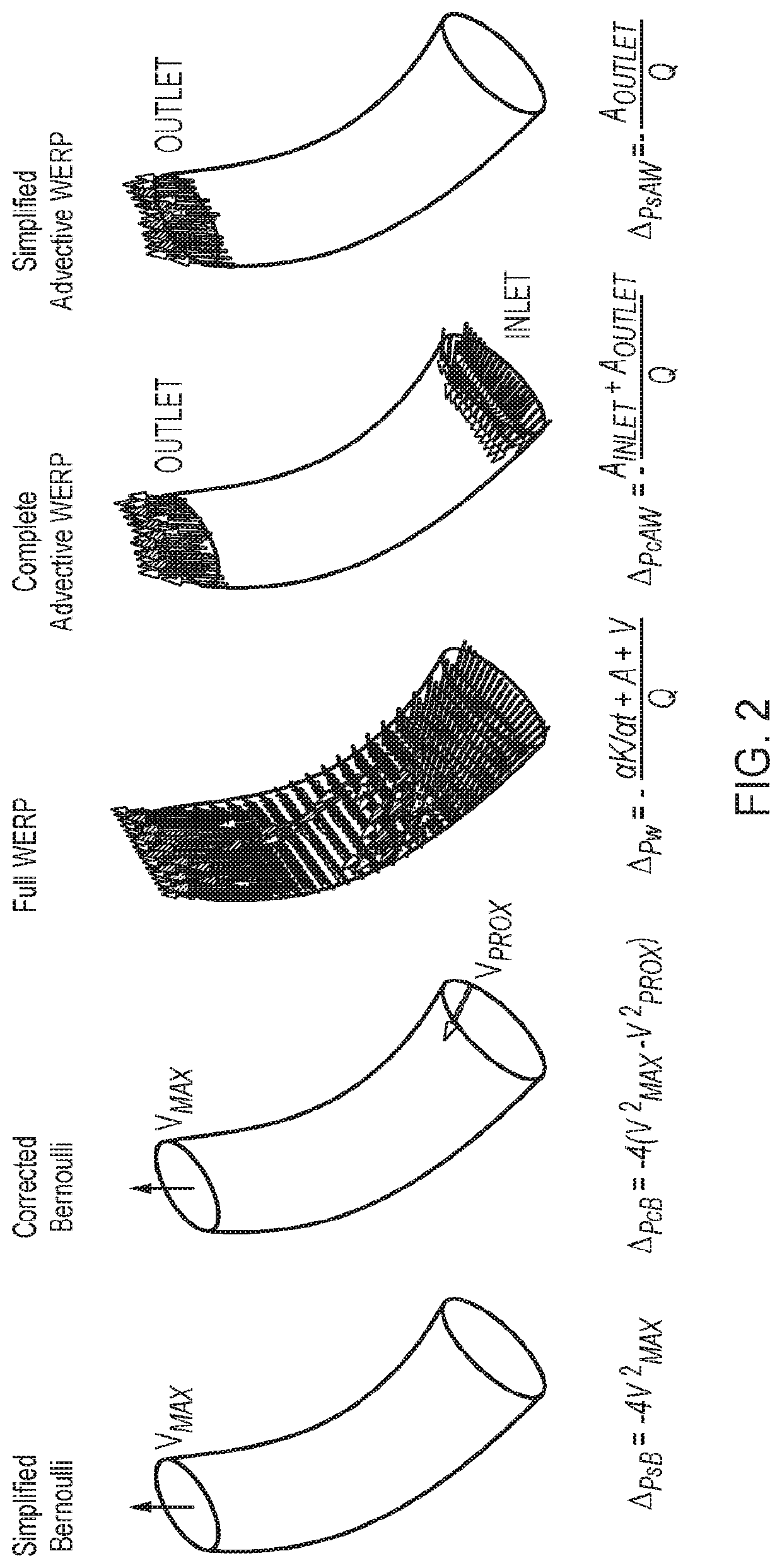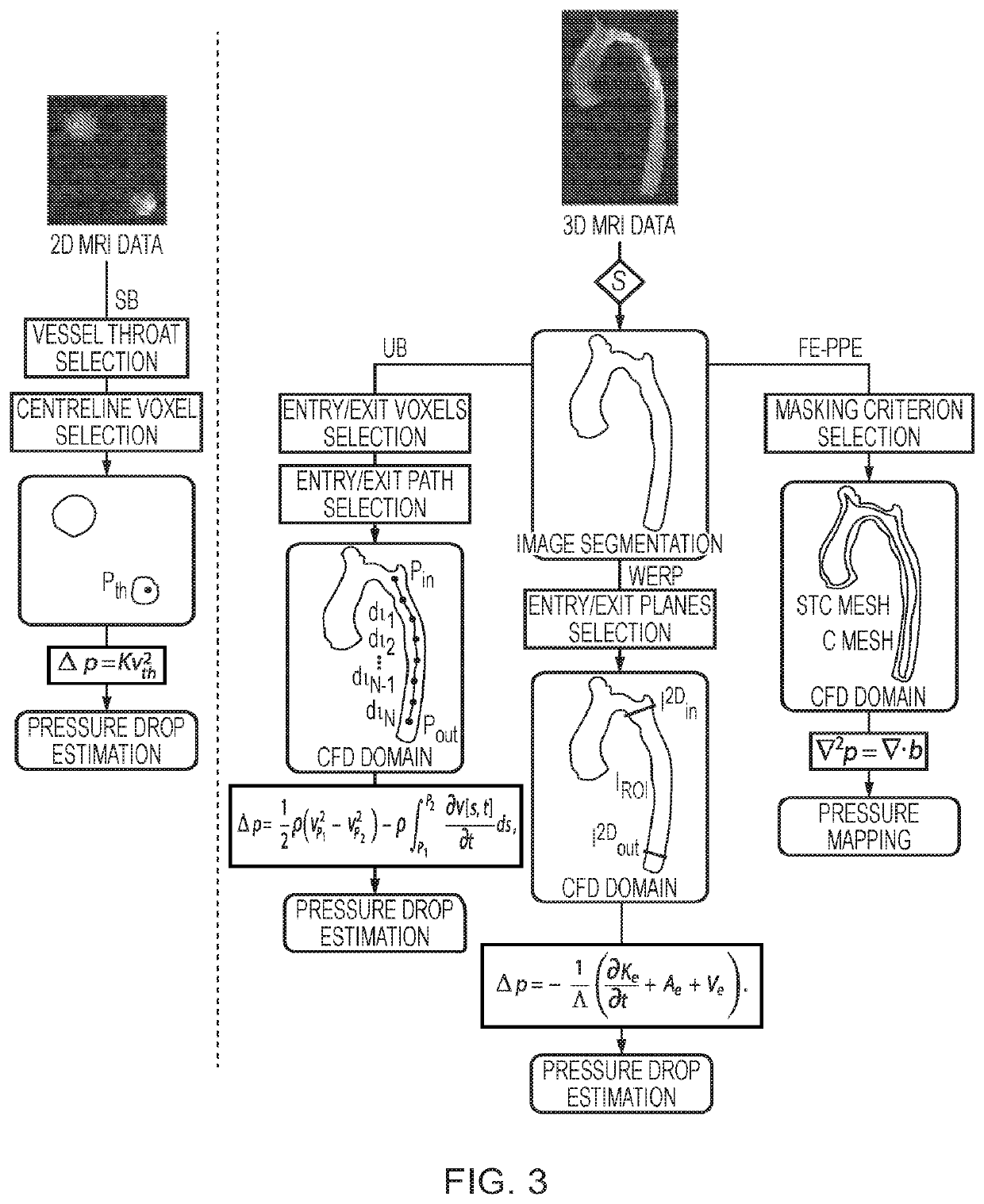Pressure Drop Estimation
a pressure drop and estimation technology, applied in the field of pressure drop estimation, can solve the problems of operator dependence and the limited accuracy of this approach, and achieve the effects of improving complexity, improving accuracy, and improving accuracy
- Summary
- Abstract
- Description
- Claims
- Application Information
AI Technical Summary
Benefits of technology
Problems solved by technology
Method used
Image
Examples
first embodiment
[0036]2. Methods
[0037]Starting from the work-energy principle, we derive the formula for the pressure difference over a vascular segment (Section 2.1). Subsequently, we detail its discrete formulation (Section 2.2) and pre-processing steps (Section 2.3) required to work with 4D PC-MRI data.
[0038]2.1. Pressure Difference from Fluid Work Energy
[0039]Pressure differences in a fluid system are related to the kinematics of the flow field. This relationship is described by the well-known Navier-Stokes equations where, in the absence of gravity, variations in pressure are balanced by fluid accelerations and viscous stresses. Using the conservation of mass and momentum for closed systems, the work-energy for an incompressible isothermal Newtonian fluid over a Region Of Interest (ROI) (Ω) with boundary Γ yields,
ρ2∂∂t∫Ω(v·v)dx︸∂∂tKe+ρ2∫Γv2(v·n)dx︸Ae+∫Γpv·ndx︸H(p)-∫Γμ[D(v)·n]·vdx︸Se+μ2∫ΩD(v):D(v)dx︸Ve=0,
[0040]where v represents the velocity, ρ the pressure, n is the...
third embodiment
on
[0142]The third embodiment relates to the simplifed advective WERP approach, which can be performed using 2D Doppler ECG data, although of course it may also be applied with other imaging systems that obtain more information, such as 2D PC MRI, 3D Doppler ECG. In this example, however, FIG. 10(B) shows a 2D Doppler ultrasound ECG equivalent system. Here a transducer 1000 obtains 2D Doppler measurements from the subject, under the control of 2D Doppler ECG system 152, comprising 2D Doppler ECG controller 154. The system produces 2D Doppler ECG data 156, and which is then used as an input to the sAW calculation program 158, which performs the necessary processing as described previously to find solutions for the outlet planes of the vessel being monitored, which is then stored and output as sAW output data 160.
[0143]FIG. 8 illustrates the basic method of operation of the sAW approach. Here, at s.8.2 the ECG data of the outlet plane of the subject vessel for which pressure drop acros...
PUM
 Login to View More
Login to View More Abstract
Description
Claims
Application Information
 Login to View More
Login to View More - R&D
- Intellectual Property
- Life Sciences
- Materials
- Tech Scout
- Unparalleled Data Quality
- Higher Quality Content
- 60% Fewer Hallucinations
Browse by: Latest US Patents, China's latest patents, Technical Efficacy Thesaurus, Application Domain, Technology Topic, Popular Technical Reports.
© 2025 PatSnap. All rights reserved.Legal|Privacy policy|Modern Slavery Act Transparency Statement|Sitemap|About US| Contact US: help@patsnap.com



